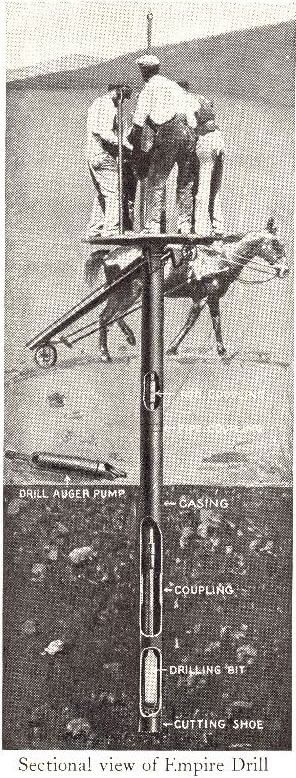Table of Contents
Steam Electric Dredge
There can be no question that the most efficient and economical method of operating a dredge is to have all the units electrically driven by individual motors and where electric power is available, the question of motive power presents no difficulty. Where such power is lacking and a self-contained steam driven dredge is required, then our steam-electric driven type should be used.
In order to obtain a self-contained dredge with its power plant on board, several attempts have been made by others in the past to use gas or oil engines, but these attempts have not proven very successful. Such engines are too delicate for the rough work involved in gold dredging. They are exceedingly heavy and the usual vertical type racks the hull in bad shape. It is almost impossible to put foundations under these engines that are heavy enough to absorb the shock of the explosions. Furthermore, it is essential that these engines be kept free from dust and dirt, and this is practically impossible on a dredge. Sooner or later fine grit is certain to work its way into the cylinders and bearings, eventually causing them to wear out. In a few instances the locomobile, which is an overmounted engine on a portable boiler, has been tried in combination with an electric generator; but these engines being of the reciprocating type, do not lend themselves readily to the driving of the usual type of generator. Besides, the boiler furnaces are small and not well adapted to burning wood.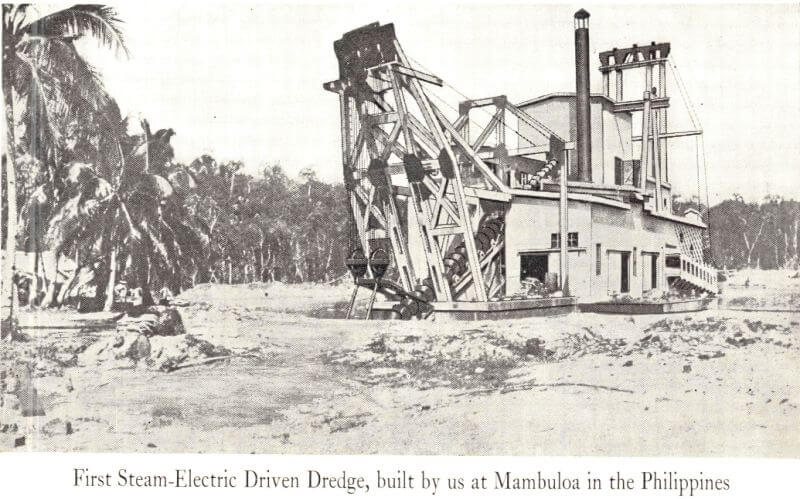
All in all, up to the advent of our own steam-electric driven dredge, the steam-driven dredge, containing a boiler with individual engines for the various units, was the most successful type of self-contained dredge. The Gumoas Dredge, which we have just described, was of this type, but our new type of steam-electric dredge presents a great improvement over this and unquestionably offers the most practical solution of the problem.
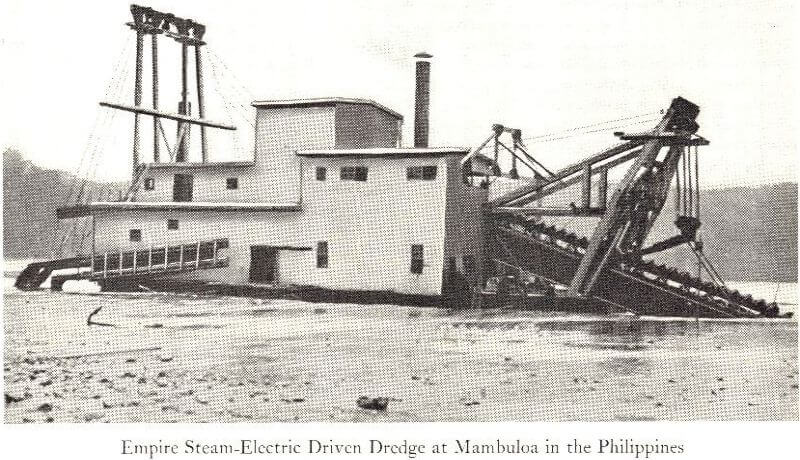
Steam Electric Dredge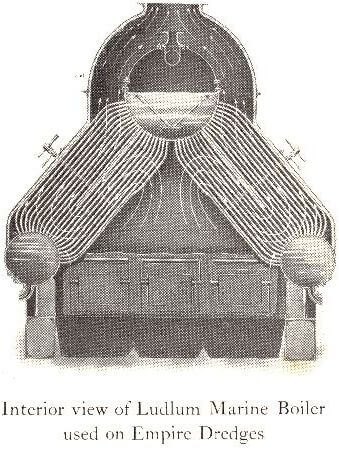
We have the distinction of having constructed the first steam-electric dredge ever built in this country. This dredge was built for working the Mambuloa Placer Company’s property in the Philippine Islands. We equipped it with a steam boiler and a steam turbo-generating set, all the units being driven by separate electric motors. In this way we secured all the advantages and flexibility of electric operation and at the same time all the economy possible in the steam-electric generating plant.
The boiler was of our well-known water-tube type, with an extra large furnace arranged for burning wood. (The Ludlum Boilers on steam-electric dredges are now regularly equipped with large furnaces, adapted for burning wood, coal or oil with only slight changes in the furnace.) This boiler furnished steam at 150 pounds pressure to a 625 K.V.A. turbo-generator which operated condensing.
High Efficiency
In connection with this work a good opportunity was afforded for comparing the efficiency of the steam-electric dredge with that of the regular steam dredge equipped with a boiler and a number of small engines for driving units. The Gumoas Dredge in another part of the Philippine Islands, of which we have already spoken, was of the steam-driven type, having been built by us some two or three years previously. The Gumoas Dredge was equipped with 5-foot buckets and when digging to full capacity, consumed about 14 cords of wood per day. This was considered a very economical plant at the time it was built and the dredge made a remarkable record for efficiency. The Mambuloa Dredge, however, had 8-foot buckets and while it dug twice as much gravel per month, yet it consumed only about the same quantity of wood as the Gumoas Dredge, namely 15 cords per day. This showed an increase in operating efficiency of practically 100% over that of the steam-driven type as illustrated by the Gumoas Dredge.
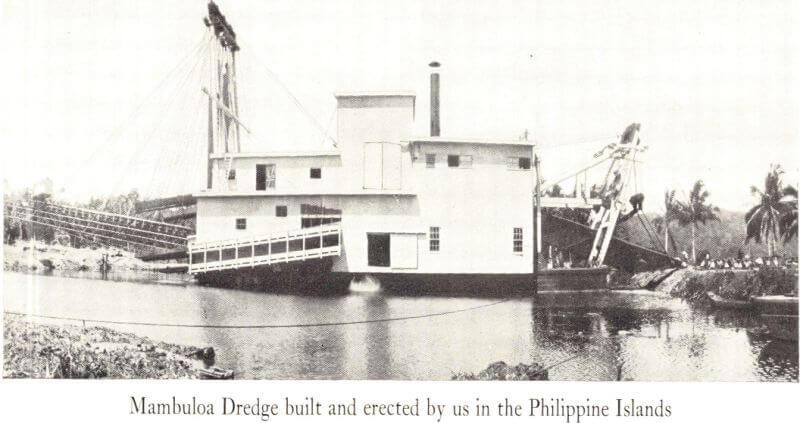
Low Operating Costs
The operating costs of the Mambuloa Dredge were much lower than those of the ordinary steam-driven dredge because of the economies effected by this type of main driving unit. The oil and supplies required for each engine on the steam dredge and the wear and tear on these engines were items of large expense; the saving in lubricating oil alone, with the turbo-generator, proved a very large item. Besides, this plant does away with all of the steam and exhaust piping that is necessary with the separate steam engines located in various parts of the dredge. It also obviates the difficulties usually found in maintaining a suitable vacuum with exhaust piping running around the dredge to the different engines, as the vibration in digging makes it most difficult to maintain tight joints both in the exhaust and in the steam piping. With the steam turbo-generator set all these difficulties disappear and little attention is required in its operation.
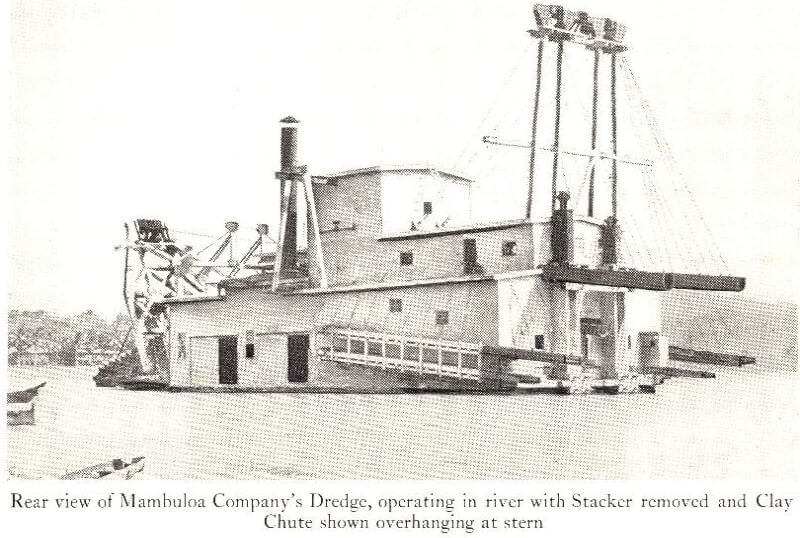
Furthermore, the reciprocating engines of the steam dredge have a tendency to rack the hull while in the steam-electric dredge, the steam turbo-generating set has no racking action whatever. In fact, there is so little vibration that no special foundation is required in the dredge.
It is interesting to note that the Mambuloa steam-electric dredge did not cost any more to build than if it had been built along the same general lines as the Gumoas Dredge with its numerous steam engine unit drives.
Dredging Clay and Barren Overburden
Sometimes a stratum of clay and barren overburden is found overlying the main body of pay gravel, and the economical handling of this situation presents quite a problem. Such conditions had to be taken into consideration in designing the Mambuloa Dredge, which we have just cited as an example of the steam- electric type of dredge.
The Mambuloa Placer Company’s property had been tested and drilled with Empire Drills, and while rich pay gravel was found on the bed rock, this gravel was overlain by from forty to forty-five feet of barren sand and clay.
We successfully worked out a method of handling this condition by means of the following arrangement: A clay chute or sluice to bypass the barren material
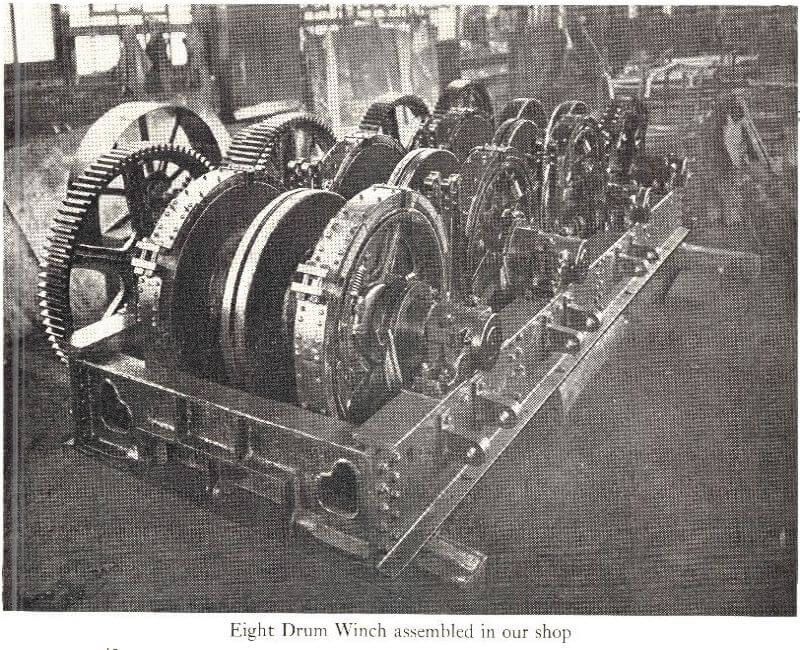
was placed directly over the screen and run to the stern where it divided into two branches, each of these extending beyond the stern about thirty feet. This sluice was semi-circular in section, so as to secure the largest carrying capacity with the least amount of water. The first part of the sluice, where the buckets dump, was of manganese steel, and this part was hinged so that it could be readily raised when auriferous gravel was encountered, permitting the buckets to dump into the regular dump hopper in the usual manner and the material to pass through the screen and over the gold tables.
A high-pressure pump furnished water at the head of the clay sluice for washing, the water being introduced across the entire width of the sluice and in the same direction as that in which the sand and clay traveled. This arrangement prevented any blocking of the sand and clay as it was dumped into the sluice.
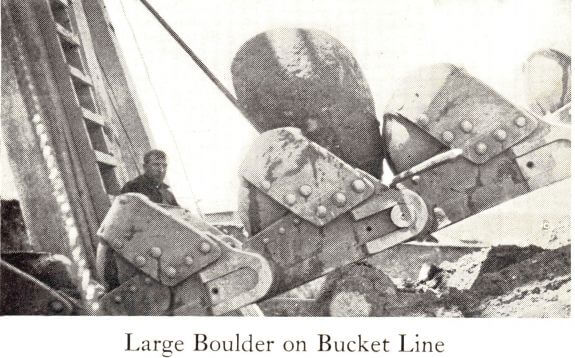
We built this dredge in the heart of the Philippine country taking care of the transportation and building docks for the landing of all dredge material. This involved quite a problem as the steamships were obliged to lay off the shore about a mile and from that point the machinery and lumber was unloaded into punts and hauled ashore where it was again transported into the interior over a railroad built by us. Notwithstanding all the hazards involved in this work, we completed the dredge and put it in successful operation.
Dredging Large Boulders
In handling large boulders several points must be considered in the construction of the dredge. Necessarily all parts must be designed and constructed for great strength. Ample room must be provided in the dump hopper and its opening so that the boulders will not block it up. The screen must be unusually strong and larger than ordinary in capacity; the stacker must be ample in width, and sufficient height must be provided under the stacker motor house to permit the passage of the large boulders.
These various points were all covered in the construction of the Derry Ranch Gold Dredging Company’s dredge. The cut shows a typical sample of the boulders that this dredge had to contend with. Other difficulties were presented by the
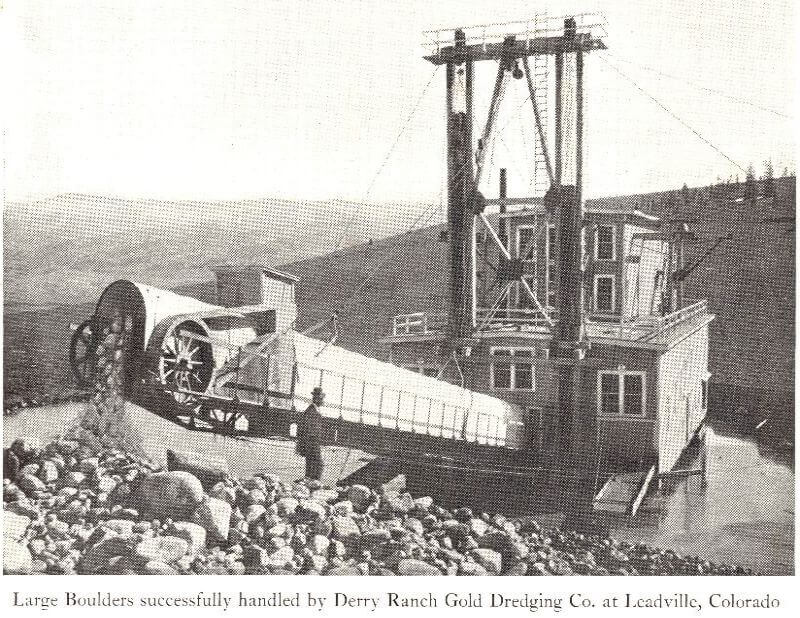
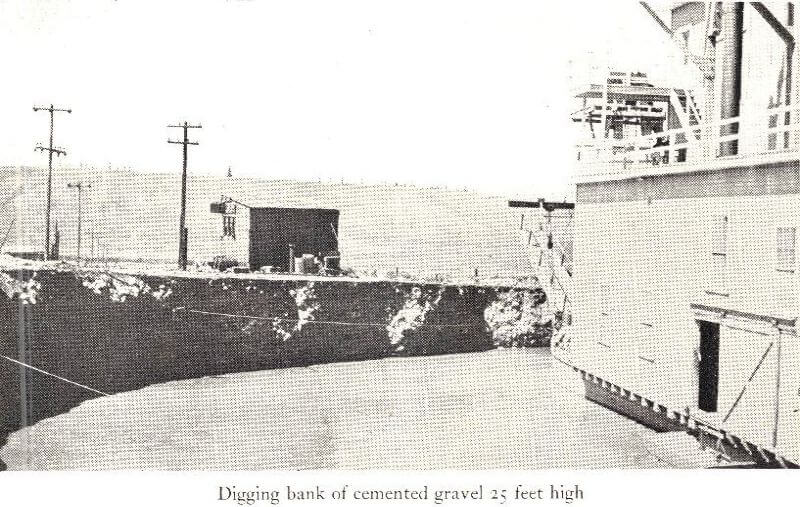
fact that the property was located at an altitude of 10,000 feet above sea level and consequently the climate was exceedingly severe and the operating season short. It was not found advisable to operate the dredge during the winter time inasmuch as the operating costs would be exceedingly high under these severe and difficult conditions. It would also have been poor business to mine the limited amount of ground that the Company possessed under these high operating costs during the winter, when the same ground could be mined in the summer season at far less cost per cubic yard. An additional difficulty was also due to the fact that the dredge operators were not permitted to let any drainage water from the dredge pond run down and on to the adjoining neighbor’s property, because of the damage that might ensue to the crops thereon.
A Successful Enterprise
In the face of these various difficulties, full yardage and unusual low working costs were maintained. This dredge has made many records that have never been equalled and is a good example of exceptional earning capacity having paid over 50% a year in dividends from its very inception. These results were largely due to its efficient design, excellent materials and perfect workmanship.
This dredge was equipped with 6-foot buckets of our latest all-manganese steel type. It was electrically driven, receiving power from the Colorado Light and Power Company’s line at 13,000 volts and stepping down to 2200 volts in the transformer station on the property. The main digging and pump motors were operated at this voltage. The rest of the motors operated on a 440 volt circuit which was stepped down through transformers located on the dredge.
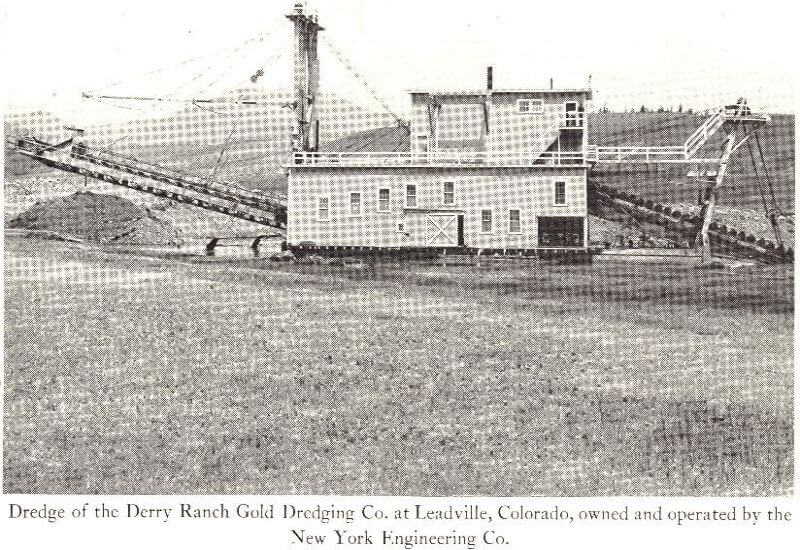
It was found necessary to heat the dredge while operating in the late Fall and early Spring. (It was closed down during the mid-winter.) This was accomplished by the use of steam heating coils fed by a 50 H.P. boiler and by having steam jets playing directly on to the stacker belt pulleys. A large hot air furnace was also employed sending a current of hot air up through the stacker housing which consisted of a canvas covering as shown on Page 31. This heating arrangement gave excellent satisfaction and allowed the dredge to operate many times when the temperature was from 20 to 30 degrees below zero.
The working of this property presented an illustration of the reliability of competent prospecting. The ground was very thoroughly drilled and pitted in advance of operations, and the results of the dredging came fully up to expectations. In fact, it was a very easy matter for us to calculate the production far in advance and to estimate our net profits accordingly with remarkable accuracy.
The Derry Ranch Gold Dredging Co. was organized and owned by the New York Engineering Company, who have managed and operated it from its inception and it stands forth as a very excellent example of good methodical business-like procedure as indicated by its dividend record.
It went into operation October 10, 1915, and during the two months following, it handled 142,900 yards of gravel and recovered $69,552 in gold.
We append herewith a table of the operations of the Derry Ranch Gold Dredging Co. which illustrates the excellent results accomplished by this dredge.
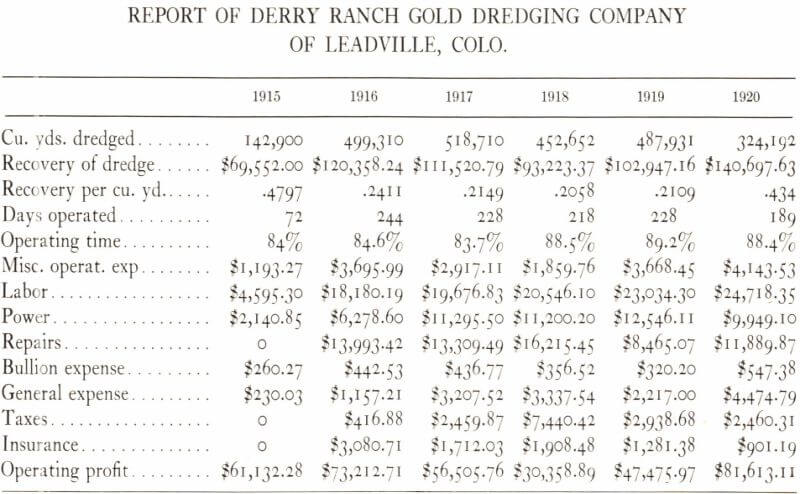
In May, 1920, the Derry Ranch Dredge averaged 22 hours, 46 minutes operating time per day throughout the month. This is an average of 93.96% of the possible operating time. During the entire year of 1920 the dredge averaged 88.48% of the possible operating time. Both of these figures constitute a record that in all probability will stand for some time to come.
A Resoiling Dredge
It sometimes happens that the laws of the country or special conditions make it necessary to replace the original topsoil after dredging and various methods of resoiling have been tried with varying success.
The necessity for resoiling came up in connection with the exploitation of the Chiksan Gold Mining Company’s property in Korea. One of the conditions of the work was that the ground had to be restored to its previous condition as arable agricultural land. The topsoil overburden was barren of any gold values and did not have to be screened or passed over the gold-saving tables. For the resoiling process we worked out an ingenious device which consisted of a set of spiral deflecting bars arranged in the interior of the screen like the rifling of a gun barrel. The motor driving this screen was reversible, and the tail chute carrying the discharge from the screen was arranged with a double discharge, one leading to the tailing stacker and the other leading directly overboard at the tail of the dredge.
While the barren overburden was being dug, the speed of the screen was increased in the forward direction so that the spiral deflecting bars hastened the pas-
Thorough Prospecting Work
The Chiksan Gold Mining Company of Korea, offers an excellent example of conservative business management and procedure in a gold dredging enterprise. They spent some three or four years in prospecting their property with Empire Drills and then in turn checked up these drilling results by pits and shafts. Over sage of this material through the screen without breaking it up and discharged it through one of the branch chutes on to the tailing stacker and this in turn re-deposited it on top of the gravel tailings pile. During this operation no wash water was admitted to the screen. When the pay gravel was encountered, wash water was turned into the screen and the direction of rotation was reversed. The spiral retarding bars then served to break up the gravel and hold it back until it was completely disintegrated and thoroughly washed. As it passed out through the end of the screen it was conducted in the other branch chute directly over the stern of the dredge, and as the dredge moved forward this gravel was in turn covered over with the overburden or topsoil from the tailing stacker. The entire process of resoiling was thus made practically automatic and added no expense to the normal cost of operating the dredge.
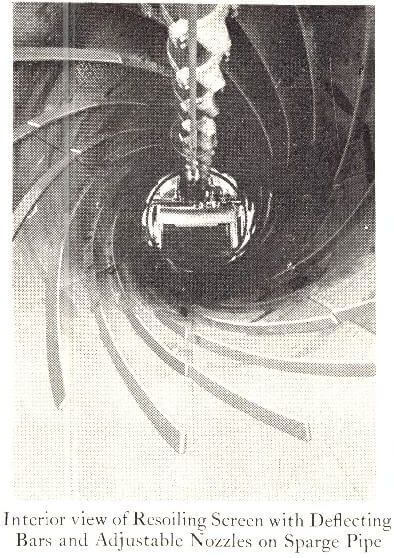
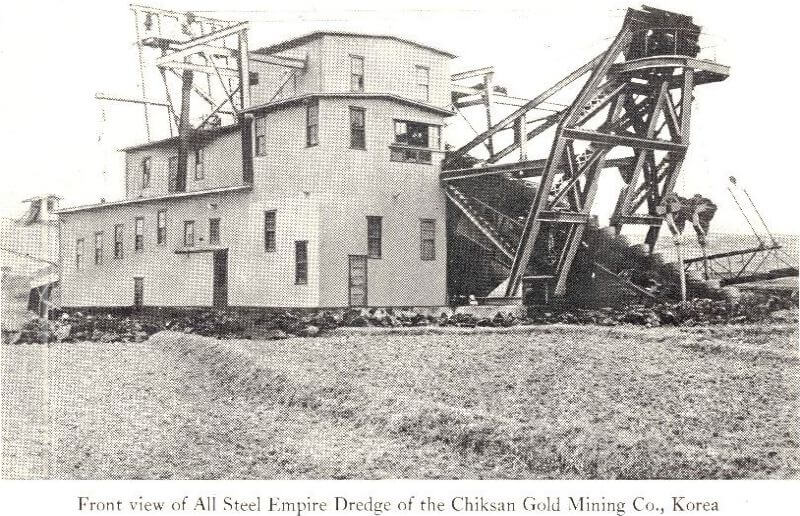
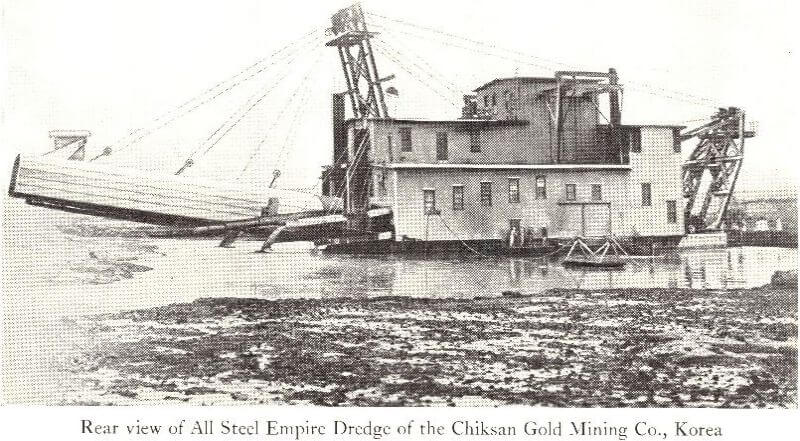
3,000 holes were sunk on the property and the map on opposite page will clearly illustrate how thoroughly the property was explored. Each small circle on this map represents a drill hole and this piece of ground is two miles long. Another map showing vertical cross sections of each line of holes presented the entire area of this piece of ground as an open book wherein one could read by means of these cross section holes, the exact nature of the ground, variations of the depths to bed rock and the gold values contained in the ground, etc.
This work was so completely and thoroughly done that we were enabled to design and build a dredge that completely fulfilled every requirement demanded by the conditions of the property.
Another All-Steel Dredge
This dredge had all manganese steel buckets of 10 cubic feet capacity. It was electrically driven, power being generated at a shore station which was located on a railroad in order to secure its coal supply. The hull and super-structure as well as the gold-saving tables were of steel. The stacker was housed and heated for winter operations. The hull also contained steam heating coils that ran entirely around the skin or sides. This heating of the steel hull not only served to keep warm the dredge itself, but also retarded the freezing of the pond.
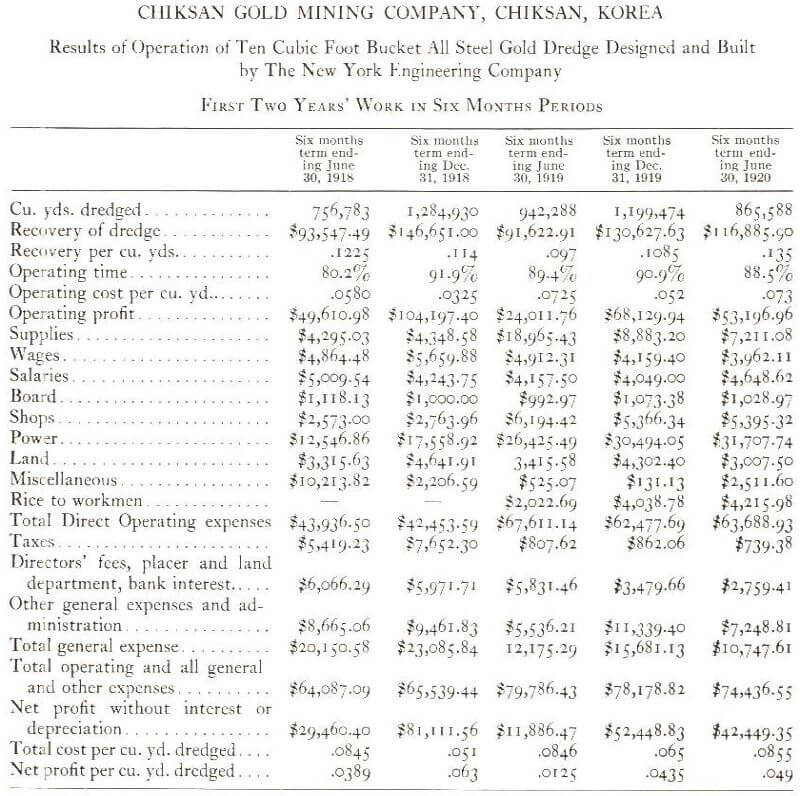
Efficient Operation
When this plant first began operations, coal cost $3.00 per ton, but the general advance in prices during the war brought the price up to $8.00 and it has remained at this figure ever since. Power costs accordingly mounted very high, as will be noted by reference to the company’s report.
Notwithstanding high power costs and the low gold tenor of the ground (11 cents per yard), this company has been able to make splendid profits and pay good dividends from its very inception. There are few if any other dredges in the world that have ever earned money and paid dividends when operating in 11 cent ground, and we think we are safe in saying that the work of the Chiksan Gold Mining Company, establishes a world’s record. This speaks well both for the management of the company and the designers and builders of the dredge, and any new dredging enterprise would do well, in starting out, to follow in the footsteps of the Chiksan Gold Mining Company.
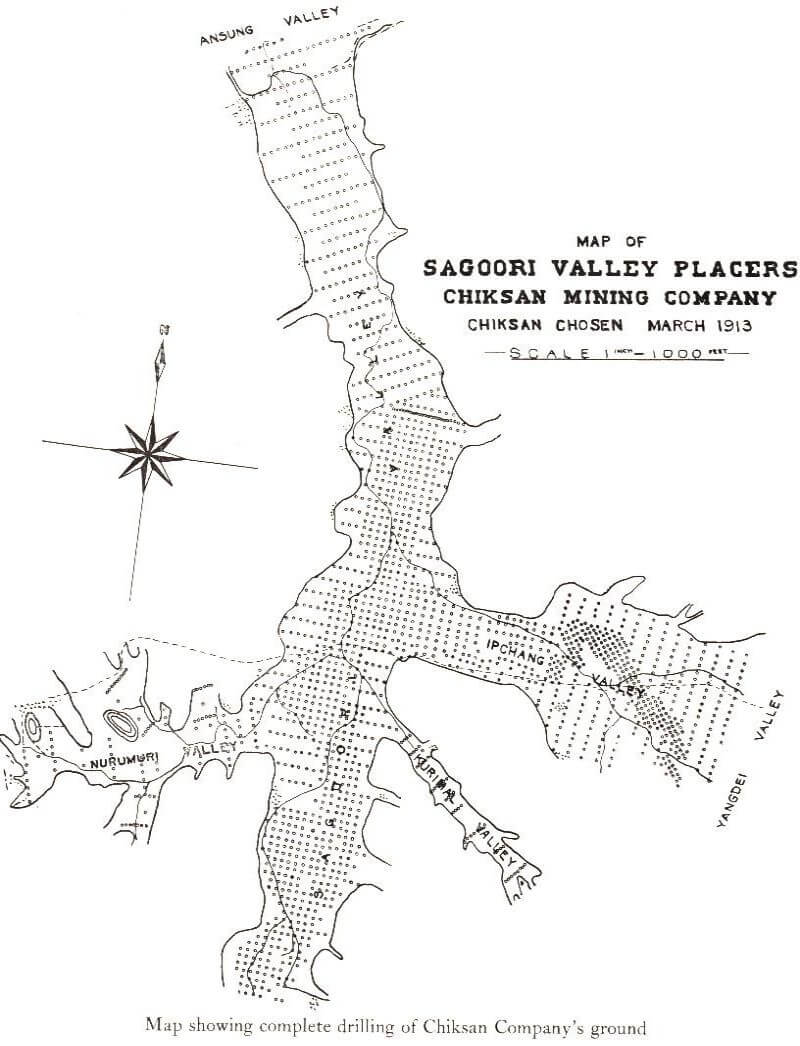
The Road to Success
They prospected their property thoroughly with the best and most reliable apparatus — the Empire Drill. They engaged one of the leading dredge engineers in the United States to help them in the selection of their dredge. They obtained competition from all the leading dredge building companies and finally awarded the contract to us for the designing and building of their dredge. We superintended the erection of it on their ground in Korea and also the operation of the dredge for the first two months and during this time we trained a native crew to run it, thus having started the Company well on the road to success.
Data That Should Be Given When Writing To Us
Any one desiring information concerning their placer project should feel perfectly free to write us, as we have a corps of engineers who are thoroughly experienced in this line of work, and whose suggestions may be of value to you.
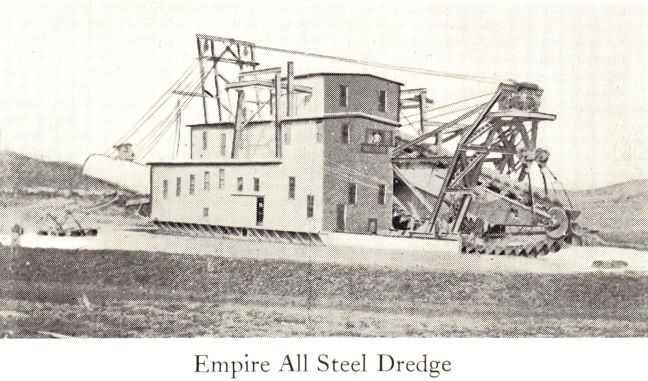
We were the first concern in this country to establish the principle of designing each and every dredge to suit the particular conditions under which it is to operate, and the carrying out of this principle by us has contributed largely to our success.
When writing us regarding a project, it is advisable to give us the approximate location of the ground, or at least the country in which it is located, as we are familiar with the general conditions in most of the dredging fields of the world. Kindly advise us at the same time the monthly yardage you wish to obtain, the maximum depth of bedrock below water level, and the maximum height of the bank above water level, the character of the gravel, whether loose or cemented; and the size and frequency of the boulders; the power by which the dredge is to be operated, and the transportation facilities, with special regard for the heaviest piece that can be conveniently transported to the dredging site.
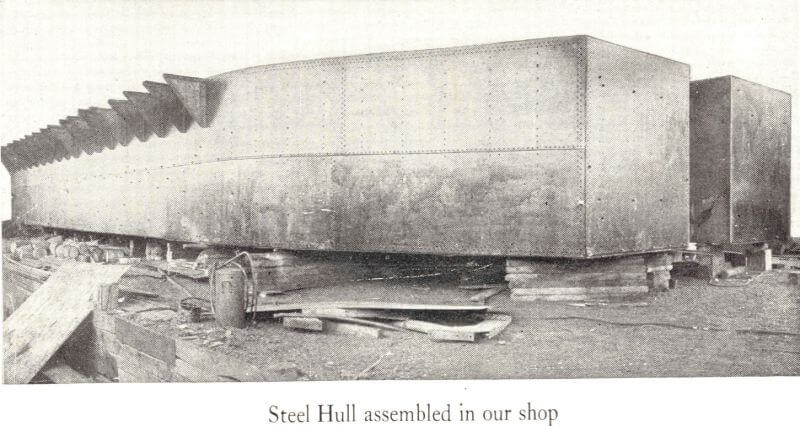
Specifications of Empire Dredges
The following tables afford some conception of the relative sizes and capacities of dredges as constructed by us. Since all dredges are built to meet specific conditions, these figures are necessarily only approximate. They should however, prove sufficient for preliminary calculations.
The size of a dredge is always determined by the cubical contents of its buckets in cubic feet.
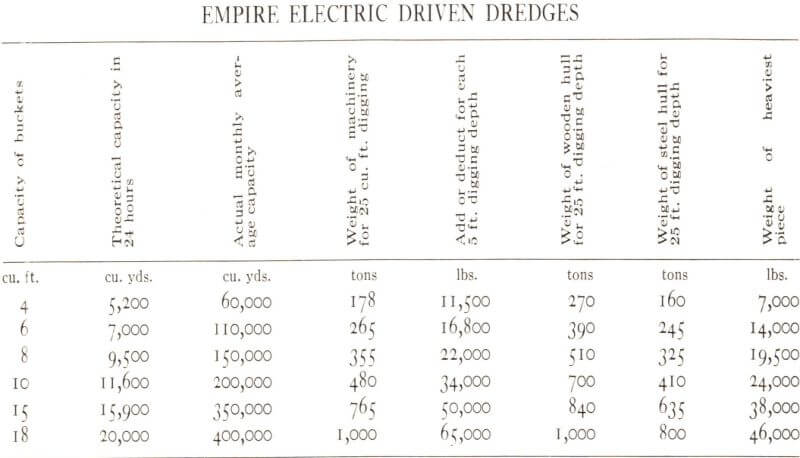
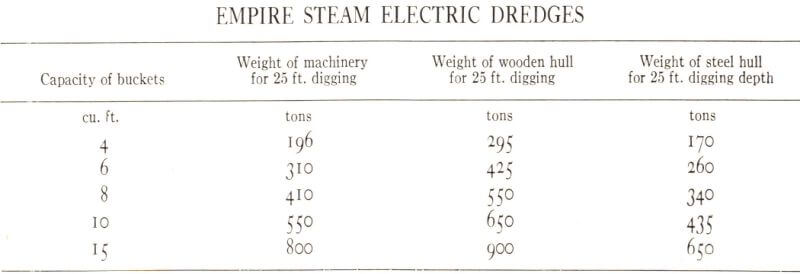
Note.—Other data on steam dredges, the same as in the above table of Electric Dredges.
